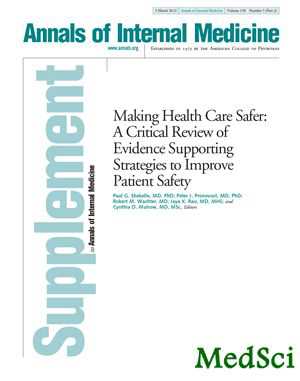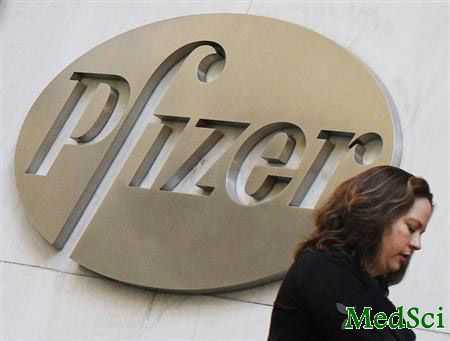ANN INTERN MED:乳腺癌的药物性预防
2013-04-17 ANN INTERN MED 丁香园
在一份系统性回顾的研究中,研究人员得出了这样一个结论:三苯氧胺和雷洛昔芬(Evista)的使用能够让乳腺癌患者“广泛受益”。该研究的结果发表在Annals of Internal Medicine杂志4月16日的一期中。来自临床试验的数据表明,三苯氧胺和雷洛昔芬的预防性应用可以降低浸润性乳腺癌的发生。研究人员说,组间分析和决策模型表明,具有高风险的女性,特别是曾经做过子宫切除术的女性患者,在应用三
在一份系统性回顾的研究中,研究人员得出了这样一个结论:三苯氧胺和雷洛昔芬(Evista)的使用能够让乳腺癌患者“广泛受益”。该研究的结果发表在Annals of Internal Medicine杂志4月16日的一期中。
来自临床试验的数据表明,三苯氧胺和雷洛昔芬的预防性应用可以降低浸润性乳腺癌的发生。研究人员说,组间分析和决策模型表明,具有高风险的女性,特别是曾经做过子宫切除术的女性患者,在应用三苯氧胺和雷洛昔芬进行预防性治疗时,可以从中获得最大的受益和最小的伤害。
当美国预防服务工作小组(USPSTF)更新其关于乳腺癌治疗策略的建议时,将会用到这份综述研究的结果。USPSTF上次就这个话题发表声明是在2002年。当时,对于普通女性和乳腺癌发生风险低的女性,USPSTF不推荐将三苯氧胺和雷洛昔芬作为常规药物用于原发性乳腺癌的预防性治疗。而对于乳腺癌发生风险高的女性,USPSTF建议临床医生应当权衡对病人使用这些药物的利弊。研究指出,尽管USPSTF建议应当考虑对高风险的女性进行低风险的治疗,但是三苯氧胺和雷洛昔芬用于乳腺癌预防性治疗在美国的普及率还较低。
新的疗效证据
这份系统性回顾研究考虑了自2002年至2012年12月已发表的临床证据。研究小组总共发现了7个关于三苯氧胺和雷洛昔芬用于乳腺癌预防性治疗的临床试验。经过综合分析,这些数据表明三苯氧胺能够降低侵润性乳腺癌的发生,可以使1000名女性中的7名生存期延长5年;与安慰剂对比,雷洛昔芬则可以使1000名女性中的9名生存期延长5年。两种药物的应用均可以降低骨折的发生。然而,这两种药物的应用既不能降低乳腺癌特异的死亡率,也不能降低全因死亡率;并且这两种药物的应用会产生一系列不良反应。
"三苯氧胺和雷洛昔芬研究(STAR)"的比较数据表明,三苯氧胺比雷洛昔芬有更好的预防作用。Nelson医生及其同事指出,“与雷洛昔芬相比,三苯氧胺更能降低乳腺癌的发生,可以使1000名女性中的5名患者乳腺癌发生率降低。
然而,三苯氧胺对人体有更多的伤害。虽然两种药物均增加了病人血栓栓塞事件的发生,但是三苯氧胺与雷洛昔芬相比,前者使1000名女性中有超过4名发生了血栓栓塞事件,超过了后者。另外,与雷洛昔芬和安慰剂相比,三苯氧胺更能增加子宫内膜癌和白内障的发生。
乳腺癌高发风险的女性受益最大
研究人员报告说,"虽然临床试验表明对所有具有乳腺癌发生风险的女性应用三苯氧胺均可以降低乳腺癌的发生,但对于那些具有乳腺癌高风险因素(基于风险评分和早期非典型增生的研究结论)的女性来说,她们将更加受益。"
目前,只有三苯氧胺和雷洛昔芬被FDA批准用于乳腺癌的预防。几种其它的药物在临床试验中也表现出了降低乳腺癌发生率的作用,这包括替勃龙,拉索昔芬和依西美坦。研究指出,“虽然这几种药物还没有被FDA批准用于乳腺癌的预防治疗,但是它们将会扩大临床医生的治疗选择“。
与乳腺癌相关的拓展阅读:
- Lancet Oncol述评:腋窝淋巴结清扫术或不影响哨兵淋巴结微转移乳腺癌患者的预后
- JCO:适量饮酒有利于乳腺癌女性患者生存
- Reuters:辉瑞乳腺癌新药palbociclib获FDA重大突破药物认定
- 饮酒不影响乳腺癌患者的生存
- Lancet Oncol:手术范围、超重或肥胖影响术后乳腺癌患者上臂淋巴水肿的发病率
- JNCI:雌激素联合黄体酮会增高乳腺癌发病率 更多信息请点击:有关乳腺癌更多资讯
原文阅读:Chemoprevention of Breast Cancer: Evidence of 'Broad Benefit'
Experts have reviewed new data on the prophylactic use of tamoxifen and raloxifene (Evista) for the chemoprevention of breast cancer.
In their systematic review, published in the April 16 issue of the Annals of Internal Medicine, the researchers conclude that these agents have "broad benefit."
Data from clinical trials show that the prophylactic use of tamoxifen and raloxifene reduces the incidence of invasive breast cancer. Subgroup analyses and decision models suggest that high-risk women, particularly those who have had a hysterectomy, derive the most benefit with the least harm, the researchers report.
This review will be used when the US Preventive Services Task Force (USPSTF) updates its recommendation on this treatment strategy.
The USPSTF last issued a statement on this topic in 2002. At that time, for women at average and low risk, it recommended against the routine use of tamoxifen and raloxifene for the prevention of primary breast cancer. For women at high risk for breast cancer, it recommended that clinicians discuss the potential benefits and harms of these drugs with their patients.
Despite that recommendation to consider risk-reducing medication for women at high risk, the use of tamoxifen and raloxifene for breast cancer prevention is low in the United States, the researchers note.
New Evidence of Efficacy
This systematic review considered evidence published after the 2002 recommendation and up until December 2012.
The team found 7 clinical trials of "good to fair quality" that explored the use of tamoxifen and raloxifene in women without pre-existing breast cancer. Taken together, these data indicate that tamoxifen reduced the incidence of invasive breast cancer by 7 cases in 1000 women over 5 years, compared with placebo, and that raloxifene reduced the incidence by 9 cases.
Both drugs also reduced the incidence of fractures. However, neither reduced breast-cancer-specific or all-cause mortality rates, and both were associated with a number of adverse events.
Comparative data from the Study of Tamoxifen and Raloxifene (STAR) show that tamoxifen has a greater chemopreventive effect than raloxifene. "Tamoxifen reduced breast cancer incidence more than raloxifene by 5 cases in 1000 women," Dr. Nelson and colleagues note.
However, tamoxifen was also associated with more harm. Although both agents increased the incidence of thromboembolic events, there were 4 more cases in 1000 women with tamoxifen than with raloxifene. In addition, tamoxifen increased the incidence of endometrial cancer and cataracts more than raloxifene and placebo.
Highest-Risk Women Gained the Most
"Although the trials indicate that women at all levels of breast cancer risk had a reduction in breast cancer incidence with tamoxifen, those at highest risk (based on risk scores or pre-existing atypical hyperplasia) derived the most benefit," the researchers report.
However, it is not clear how to identify candidates for therapy. Some of the risk models that have been used in clinical trials have "low to modest discriminatory accuracy in predicting the probability of breast cancer in a person," they add.
For instance, the Gail model, which has been used as a risk threshold in trials and has been used by the US Food and Drug Administration (FDA) in its approval of the chemoprevention indication (i.e., 5 year risk >1.67%), has been found to have "low discriminatory accuracy in predicting the probability of breast cancer in a person. Most women aged 60 years or older without other risk factors would meet this threshold by age alone," the researchers write.
Currently, only tamoxifen and raloxifene are approved by the FDA for the prevention of breast cancer.
Several other drugs have demonstrated a reduction in risk in clinical trials, including tibolone, lasofoxifene, and exemestane. "Although they have not been FDA-approved for this purpose, they may expand clinical options, " the researchers note.
The review was funded by the Agency for Healthcare Research and Quality (AHRQ). Dr. Nelson and her coauthors report receiving grants and support for travel to meetings from AHRQ.

相关资料:Use of Medications to Reduce Risk for Primary Breast Cancer: A Systematic Review for the U.S. Preventive Services Task Force
Background
Medications to reduce risk for primary breast cancer are recommended for women at increased risk; however, use is low.
Purpose
To update evidence about the effectiveness and adverse effects of medications to reduce breast cancer risk, patient use of such medications, and methods for identifying women at increased risk for breast cancer.
Data Sources
MEDLINE and Cochrane databases (through 5 December 2012), Scopus, Web of Science, clinical trial registries, and reference lists.
Study Selection
English-language randomized trials of medication effectiveness and adverse effects, observational studies of adverse effects and patient use, and diagnostic accuracy studies of risk assessment.
Data Extraction
Investigators independently extracted data on participants, study design, analysis, follow-up, and results, and a second investigator confirmed key data. Investigators independently dual-rated study quality and applicability using established criteria.
Data Synthesis
Seven good- and fair-quality trials indicated that tamoxifen and raloxifene reduced incidence of invasive breast cancer by 7 to 9 cases in 1000 women over 5 years compared with placebo. New results from STAR (Study of Tamoxifen and Raloxifene) showed that tamoxifen reduced breast cancer incidence more than raloxifene by 5 cases in 1000 women. Neither reduced breast cancer–specific or all-cause mortality rates. Both reduced the incidence of fractures, but tamoxifen increased the incidence of thromboembolic events more than raloxifene by 4 cases in 1000 women. Tamoxifen increased the incidence of endometrial cancer and cataracts compared with placebo and raloxifene. Trials provided limited and heterogeneous data on medication adherence and persistence. Many women do not take tamoxifen because of associated harms. Thirteen risk-stratification models were modest predictors of breast cancer.
Limitation
Data on mortality and adherence measures and for women who are nonwhite, are premenopausal, or have comorbid conditions were lacking.
Conclusion
Medications reduced the incidence of invasive breast cancer and fractures and increased the incidence of thromboembolic events. Tamoxifen was more effective than raloxifene but also increased the incidence of endometrial cancer and cataracts. Use is limited by adverse effects and inaccurate methods to identify candidates.
本网站所有内容来源注明为“梅斯医学”或“MedSci原创”的文字、图片和音视频资料,版权均属于梅斯医学所有。非经授权,任何媒体、网站或个人不得转载,授权转载时须注明来源为“梅斯医学”。其它来源的文章系转载文章,或“梅斯号”自媒体发布的文章,仅系出于传递更多信息之目的,本站仅负责审核内容合规,其内容不代表本站立场,本站不负责内容的准确性和版权。如果存在侵权、或不希望被转载的媒体或个人可与我们联系,我们将立即进行删除处理。
在此留言









#药物性#
37
#Med#
41